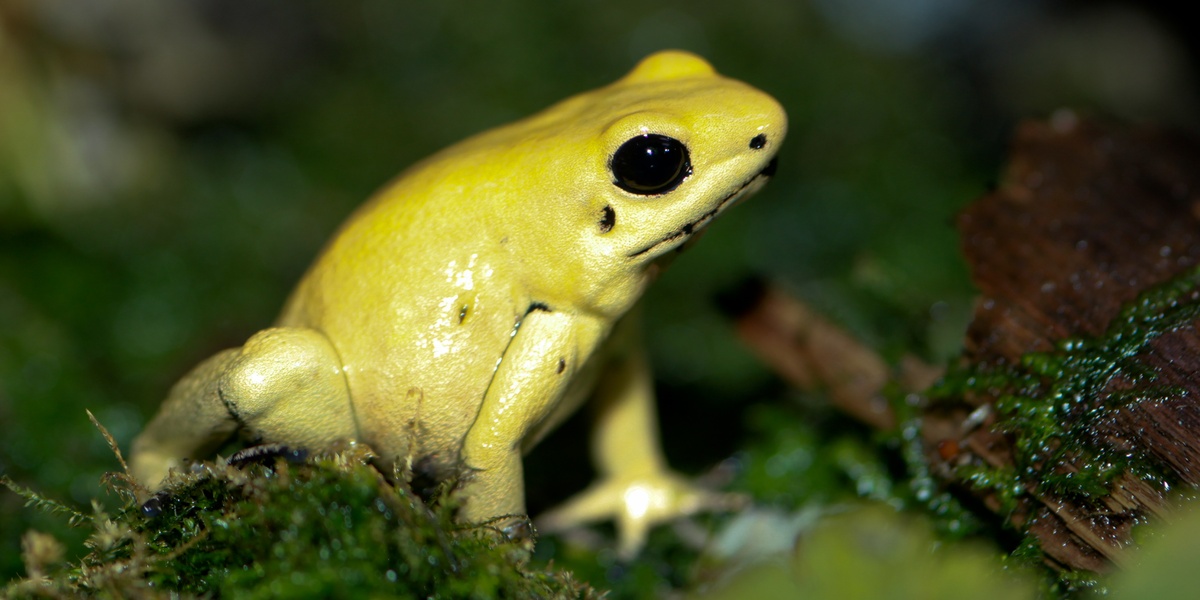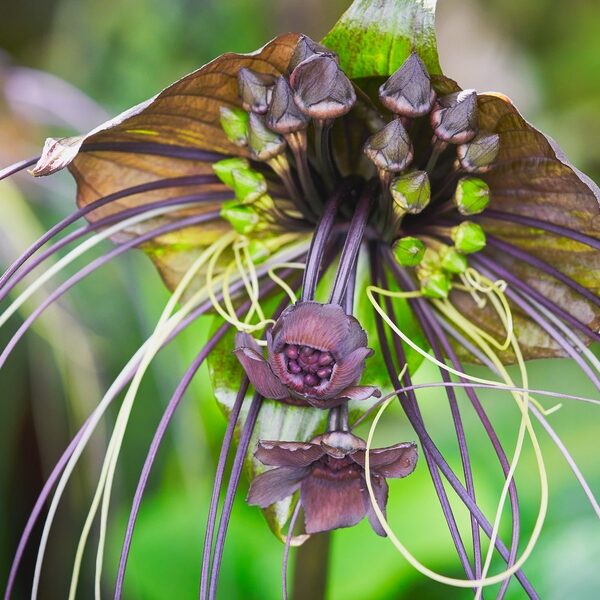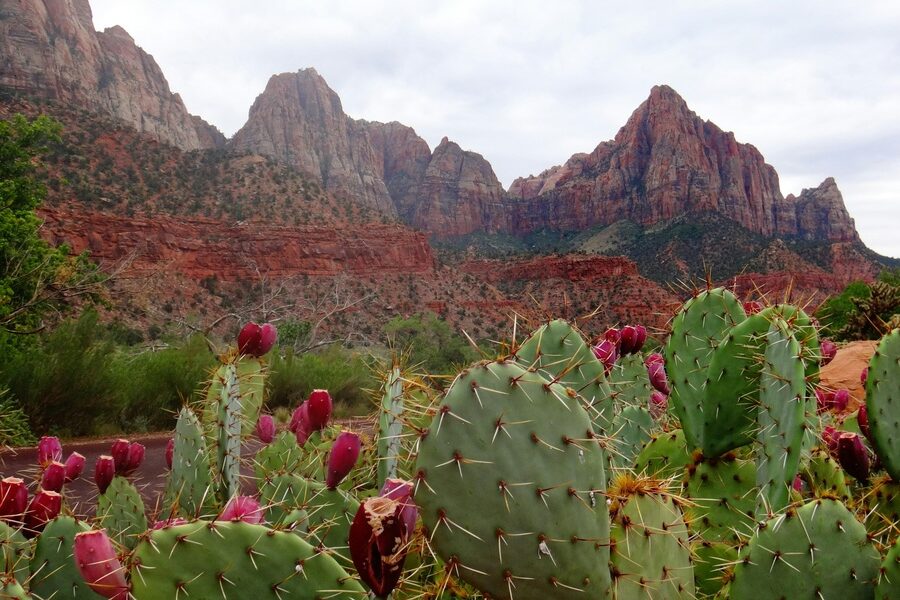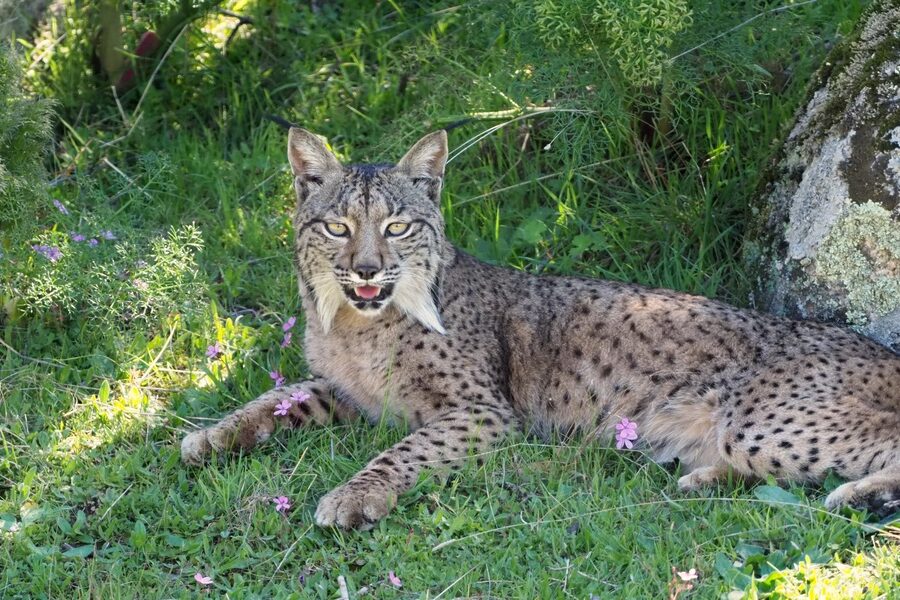From tide pools and coral reefs to rainforest understories and neighborhood gardens, tiny bursts of color catch the eye and reveal surprising ecological roles. Paying attention to these small inhabitants shows how behavior, diet, and habitat shape bright patterns across different places.
There are 35 small colorful animals, ranging from Blue Glaucus to Strawberry Poison Dart Frog. For each entry, the table lists Scientific name, Size (cm), and Region / habitat — details you’ll find below.
How can I reliably identify these small colorful animals in the wild?
Look for a combination of features: color patterns, size, preferred habitat, and behavior (e.g., swimming, hopping, or climbing). Take clear photos from several angles, note the location and microhabitat, and compare with field guides or regional databases to narrow down possibilities.
Are any of these small colorful animals dangerous or poisonous?
Yes — some use bright colors as a warning; for example, the Strawberry Poison Dart Frog is toxic, and Blue Glaucus stores stinging cells from its prey. Avoid handling unknown animals, observe from a distance, and consult local guidance if you find specimens that might pose a risk.
Small Colorful Animals
| Common name | Scientific name | Size (cm) | Region / habitat |
|---|---|---|---|
| Peacock Spider | Maratus volans | 0.5 | Australia; woodlands and gardens, often in leaf litter. |
| Orchid Mantis | Hymenopus coronatus | 5 | Southeast Asia; tropical forests, commonly found on orchids or other flowers. |
| Rosy Maple Moth | Dryocampa rubicunda | 4.5 | North America; temperate deciduous forests, especially near maple trees. |
| Jewel Beetle | Chrysochroa fulgidissima | 4 | Japan; woodlands and forests during summer months. |
| Cuckoo Wasp | Chrysididae family | 1.2 | Worldwide; found in sunny, dry locations, often near nests of host insects. |
| Orchid Bee | Euglossini tribe | 1.3 | Central and South America; tropical and subtropical forests. |
| Mandarinfish | Synchiropus splendidus | 7 | Western Pacific; sheltered lagoons and inshore reefs. |
| Clownfish | Amphiprion ocellaris | 11 | Western Pacific/Indian Oceans; sheltered reefs, famously in sea anemones. |
| Neon Tetra | Paracheirodon innesi | 4 | South America; blackwater streams in the Amazon basin. |
| Royal Gramma | Gramma loreto | 8 | Western Atlantic; Caribbean reefs, often found near caves or ledges. |
| Flame Angelfish | Centropyge loricula | 10 | Oceania; clear lagoons and seaward reefs in the tropical Pacific. |
| Peacock Gudgeon | Tateurndina ocellicauda | 7 | Papua New Guinea; slow-moving lowland streams and rivers. |
| Blue Poison Dart Frog | Dendrobates tinctorius “azureus” | 4.5 | Suriname; isolated forest savannas in the Sipaliwini region. |
| Strawberry Poison Dart Frog | Oophaga pumilio | 2.5 | Central America; humid lowland and montane forests, often in leaf litter. |
| Red-Eyed Tree Frog | Agalychnis callidryas | 7 | Central America; neotropical rainforests, usually on vegetation near water. |
| Golden Poison Frog | Phyllobates terribilis | 5 | Colombia; a tiny patch of rainforest on the Pacific coast. |
| Fire Salamander | Salamandra salamandra | 20 | Europe; cool, broadleaf forests, usually near small streams. |
| Electric Blue Day Gecko | Lygodactylus williamsi | 8 | Tanzania; exclusively on Pandanus palms in a tiny forest area. |
| Jackson’s Chameleon | Trioceros jacksonii | 30 | East Africa; humid, high-altitude mountain forests. |
| Green Anole | Anolis carolinensis | 20 | Southeastern United States; trees, shrubs, and fences in humid areas. |
| Collared Lizard | Crotaphytus collaris | 25 | United States and Mexico; arid, rocky regions and deserts. |
| Broad-headed Skink | Plestiodon laticeps | 30 | Southeastern United States; humid woodlands and suburban habitats. |
| Spider-Man Agama | Agama mwanzae | 20 | East Africa; semi-deserts and scrublands, often on rock outcroppings. |
| Ruby-throated Hummingbird | Archilochus colubris | 9 | North and Central America; open woodlands, gardens, and parks. |
| Painted Bunting | Passerina ciris | 13 | North America; scrubby habitats and woodland edges. |
| Gouldian Finch | Chloebia gouldiae | 14 | Australia; tropical savanna woodlands, typically near water. |
| Splendid Fairywren | Malurus splendens | 14 | Australia; arid and semi-arid regions with dense shrub cover. |
| Common Kingfisher | Alcedo atthis | 17 | Europe, Asia, North Africa; near slow-moving, clear water bodies. |
| European Bee-eater | Merops apiaster | 28 | Europe, Africa, Asia; open country, farmland, and river valleys. |
| Blue Glaucus | Glaucus atlanticus | 3 | Oceans worldwide; floats on the surface of temperate and tropical waters. |
| Chromodoris annae | Chromodoris annae | 4 | Western Pacific; tropical coral reefs. |
| Flamingo Tongue Snail | Cyphoma gibbosum | 3 | Western Atlantic; Caribbean coral reefs, on sea fans. |
| Blue-ringed Octopus | Hapalochlaena maculosa | 15 | Australia; intertidal rock pools and shallow reefs. |
| Flamboyant Cuttlefish | Metasepia pfefferi | 8 | Indo-Pacific; shallow, sandy seabeds near Australia and New Guinea. |
| Golden-headed Lion Tamarin | Leontopithecus chrysomelas | 26 | Brazil; lowland fragments of the Atlantic coastal forest. |
Images and Descriptions

Peacock Spider
This tiny jumping spider is famous for the male’s courtship dance. He raises a brilliantly colored, iridescent abdominal flap, like a peacock’s tail, to impress females. The colors and patterns vary wildly between the many species of peacock spider.

Orchid Mantis
Masterfully camouflaged, this predator mimics a flower petal with its pink and white coloration. It sits perfectly still to ambush pollinating insects that are drawn to its convincing floral appearance. Females are often significantly larger than the males.
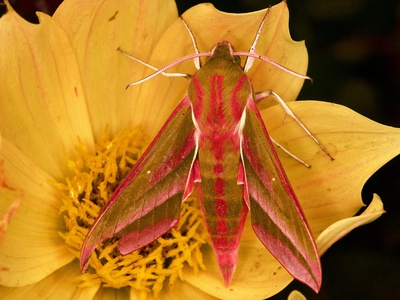
Rosy Maple Moth
With its fuzzy, vibrant yellow body and pink wings, this silk moth is one of North America’s most striking insects. Despite their bright colors, they are nocturnal and have no mouthparts as adults, living only to reproduce.
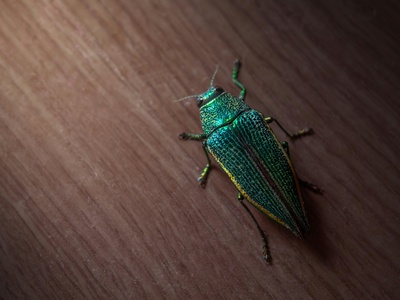
Jewel Beetle
Known in Japan as “tamamushi,” this beetle has stunning, iridescent metallic exoskeletons that shimmer in shades of green, blue, and copper. The colors are created by the microscopic texture of its cuticle, which refracts light in complex ways.

Cuckoo Wasp
These tiny wasps have brilliant, pitted metallic bodies in shades of green, blue, and red. They are kleptoparasites, laying their eggs in the nests of other bees or wasps. Their tough exoskeleton protects them from the angry host’s stings.

Orchid Bee
These bees are known for their dazzling metallic colors, ranging from green and blue to gold and bronze. Males are famous for collecting fragrances from orchids and other sources, which they store in their hind legs to present during courtship.
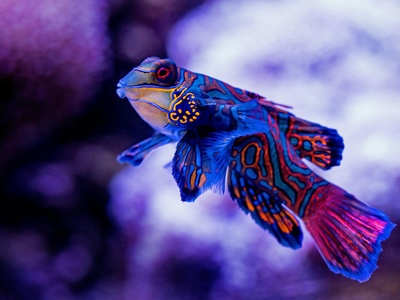
Mandarinfish
Often called the world’s most beautiful fish, the mandarinfish has a psychedelic pattern of blue, green, orange, and yellow wavy lines. It’s a shy dragonet that emerges at dusk to feed, covered in a smelly, toxic mucus for defense.
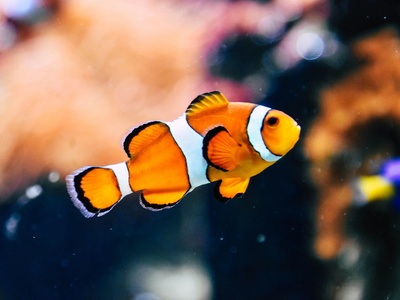
Clownfish
Instantly recognizable by its bright orange body and three white bars edged in black. Clownfish have a symbiotic relationship with sea anemones, whose stinging tentacles protect them from predators. They are immune to the anemone’s venom.
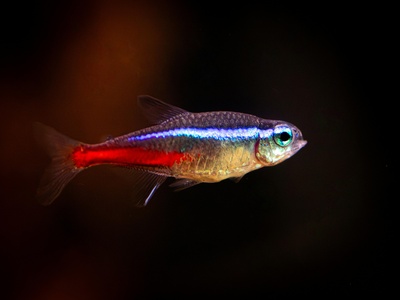
Neon Tetra
A tiny, peaceful schooling fish beloved in aquariums. It has a bright, iridescent blue horizontal stripe and a vivid red stripe on its lower body, making it stand out in the dark waters of its native habitat.
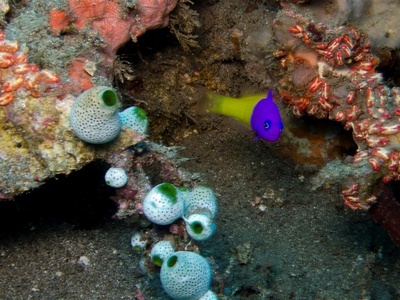
Royal Gramma
This small basslet is a visual delight with its vibrant, two-toned body. The front half is a brilliant magenta or purple, which abruptly changes to a golden yellow at the rear. It often swims upside down under ledges.
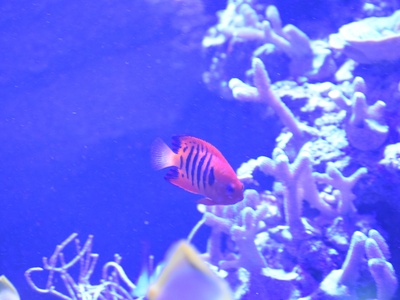
Flame Angelfish
One of the most popular dwarf angelfish, it boasts a fiery red-orange body with vertical black bars and blue-tipped fins. It is a very active fish that spends its day grazing on algae among coral branches.
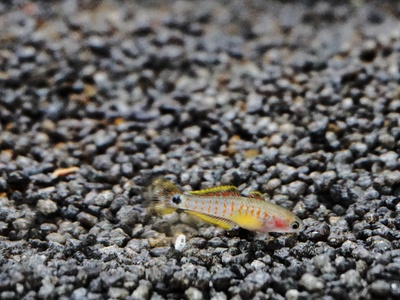
Peacock Gudgeon
A peaceful and beautiful freshwater fish, the Peacock Gudgeon has a pale blue body adorned with red spots and yellow fins. Its name comes from the prominent black “eyespot” at the base of its tail, resembling a peacock feather.

Blue Poison Dart Frog
This stunning frog has a vibrant blue body covered in black spots and patterns that are unique to each individual. Its bright coloration is a classic example of aposematism, warning predators of the toxic alkaloids in its skin.
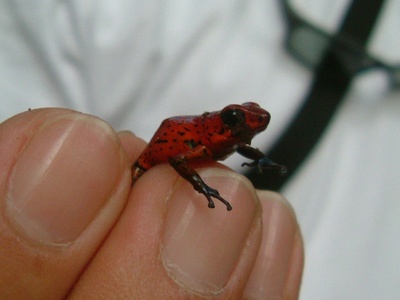
Strawberry Poison Dart Frog
Famous for its brilliant red-orange body and blue or black legs, this tiny frog’s color warns predators of its toxicity. The toxins are derived from its diet of mites and ants. Color patterns vary significantly between populations.
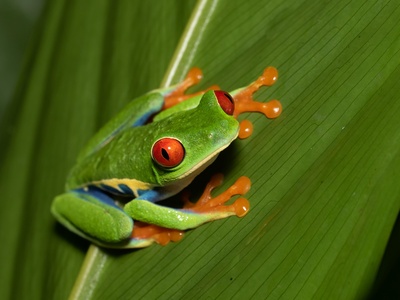
Red-Eyed Tree Frog
An icon of the rainforest, this nocturnal frog has a lime-green body, startling red eyes, blue-and-yellow striped sides, and bright orange feet. These “flash colors” can surprise a predator, giving the frog a moment to escape.

Golden Poison Frog
Considered the most poisonous vertebrate in the world, this frog’s skin is coated in a powerful batrachotoxin. Its uniform, metallic color—ranging from bright yellow to orange or mint green—serves as a potent warning to any potential predators.
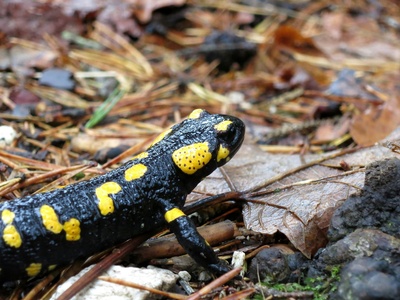
Fire Salamander
This striking amphibian has a glossy black body marked with vivid yellow or orange spots or stripes. The patterns are unique to each individual. Its skin can secrete a toxic substance when it is threatened.

Electric Blue Day Gecko
This critically endangered gecko is known for the male’s dazzling, electric blue color, contrasted with a black throat and orange underside. Females are more greenish-bronze. Their color makes them a target for the illegal pet trade.

Jackson’s Chameleon
The male Jackson’s Chameleon looks like a miniature Triceratops, with three brown horns on its face. It has a rough, green skin that it can adjust for camouflage or social signaling, often with yellow or blue highlights.

Green Anole
Known for its ability to change color from a vivid, bright green to a dull brown or gray. This small lizard, often mistakenly called a chameleon, uses color change for camouflage, social signaling, and reacting to temperature.
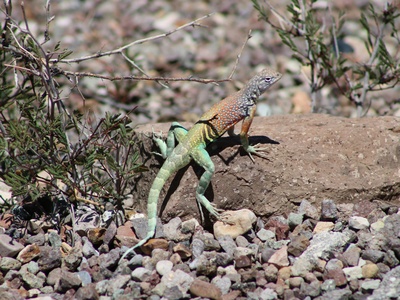
Collared Lizard
A fast and powerful lizard, the male has a brightly colored body of blue-green and yellow with two distinct black bands around its neck, like a collar. It is known for its ability to run on its hind legs at high speeds.
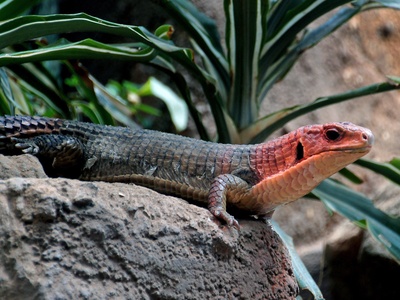
Broad-headed Skink
While females are brownish, adult males develop a spectacular, swollen head that turns a brilliant orange or fiery red during the spring breeding season. It is the largest skink species found in its native range.
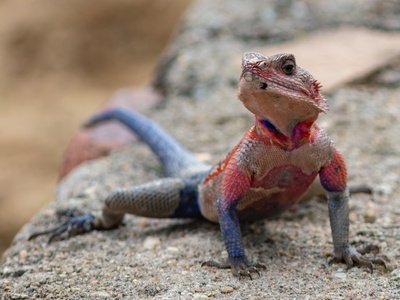
Spider-Man Agama
The breeding male of this species is unmistakable, with a brilliant red or violet head, neck, and shoulders, and a deep blue body and legs. The resemblance to the comic book hero Spider-Man is striking and has made it an internet star.
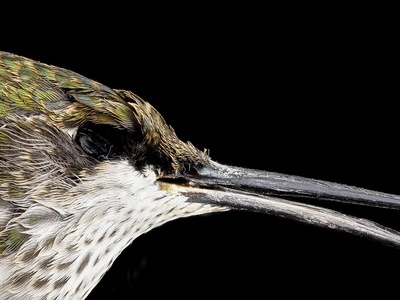
Ruby-throated Hummingbird
The male has a metallic green back and a stunning, iridescent ruby-red gorget (throat patch) that flashes in the sun. This tiny bird is an incredible long-distance migrant, with some flying non-stop across the Gulf of Mexico.

Painted Bunting
The male Painted Bunting is North America’s most colorful songbird, with a stunning mix of a blue head, green back, and red rump and belly. It is often called the “nonpareil” (without equal) for its incredible plumage.
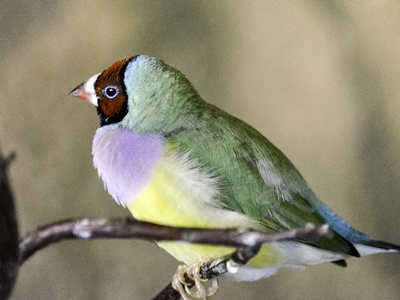
Gouldian Finch
This small finch is a riot of color, with wild individuals having a bright green back, purple chest, yellow belly, and a head that can be red, black, or yellow. They are highly social birds that nest in tree hollows.
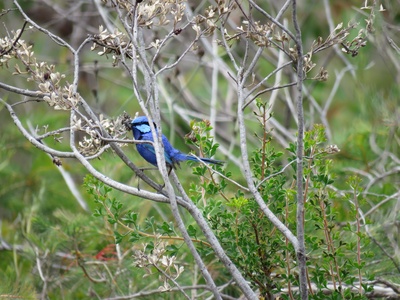
Splendid Fairywren
During the breeding season, the male transforms into a spectacular bird of iridescent, electric blue plumage, with black bands and a dark blue tail. He plucks yellow petals to present to females during courtship displays.
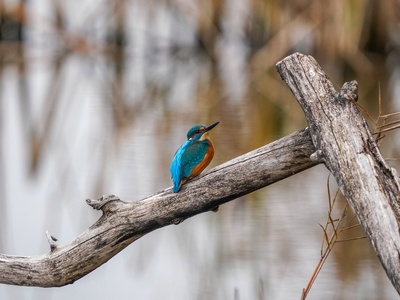
Common Kingfisher
A flash of color, this small bird has brilliant turquoise-blue upperparts, a bright orange chest, and a long, dagger-like bill. It perches above the water before diving with incredible speed to catch small fish and insects.
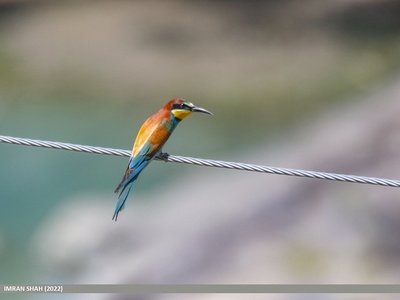
European Bee-eater
A breathtakingly colorful bird with a chestnut crown, yellow throat, and turquoise belly. As their name suggests, they are expert aerial hunters, specializing in catching bees, wasps, and other flying insects on the wing.

Blue Glaucus
Also known as the “blue dragon,” this small sea slug floats upside down, using the surface tension of the water to travel. Its blue and silver coloration provides camouflage, hiding it from both aerial and underwater predators.
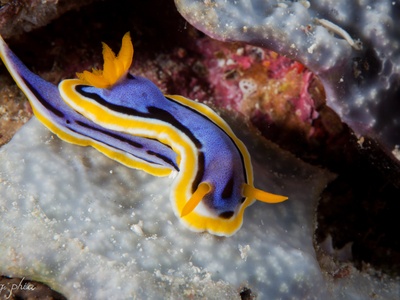
Chromodoris annae
A classic example of a colorful nudibranch (sea slug), it has a vibrant blue body, a white-and-orange mantle edge, and striking orange gills and rhinophores. Its colors warn predators that it is toxic and tastes foul.

Flamingo Tongue Snail
The beautiful orange and black spots are not on this snail’s shell, but on its living mantle tissue, which it wraps around its plain white shell. It feeds on the toxic polyps of sea fans, incorporating their poisons for its own defense.
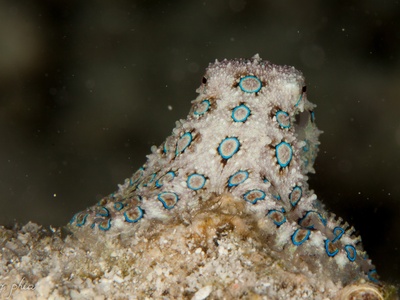
Blue-ringed Octopus
One of the world’s most venomous animals, this golf-ball-sized octopus has a yellowish-brown body. When threatened, it flashes about 60 iridescent, electric blue rings as a dramatic warning before delivering a toxic bite.
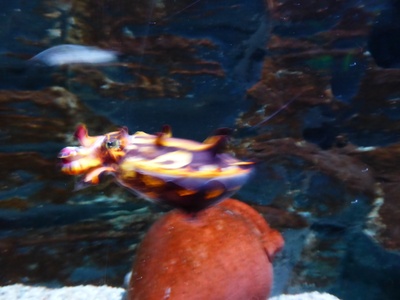
Flamboyant Cuttlefish
This small cuttlefish puts on a spectacular show, rapidly changing its skin color from dark brown to a dazzling pattern of yellow, white, and red. This display, along with its unusual walking behavior on the seafloor, warns off predators.
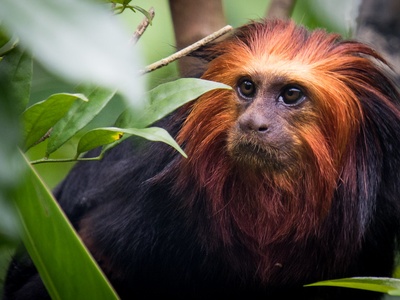
Golden-headed Lion Tamarin
This small, endangered primate has a silky black body dramatically contrasted by a thick, flowing mane of brilliant golden-orange hair covering its head, neck, and shoulders. They live in small family groups and feed on fruits, insects, and nectar.
